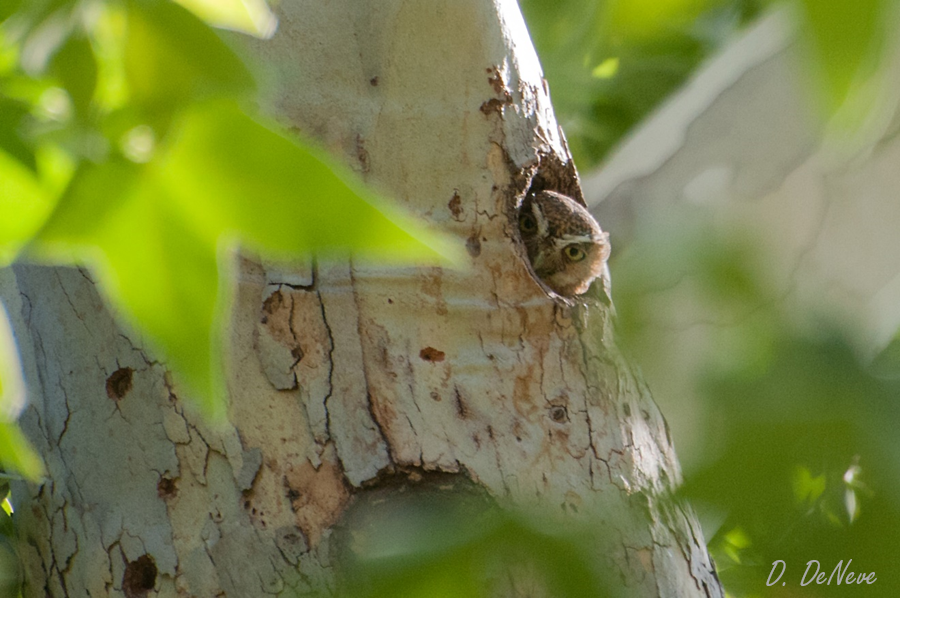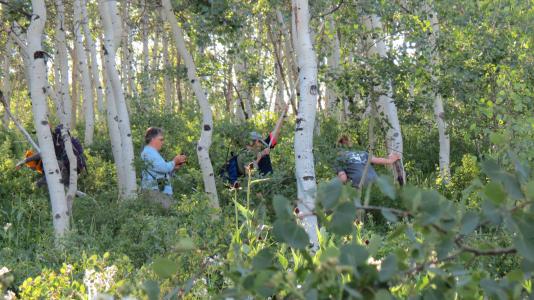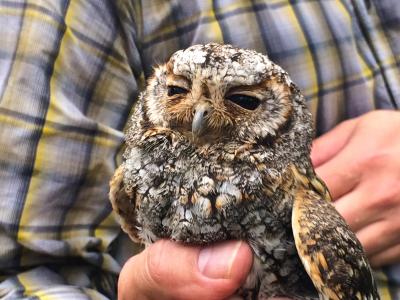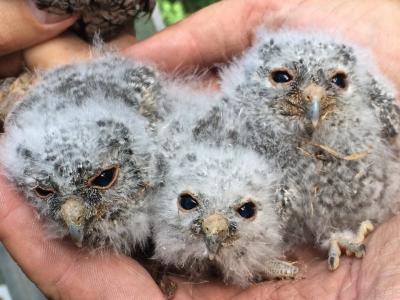Guardians of the Forest
By Alix Morris and Dr. Stan Rullman
As darkness settles on the forest, a fleet of tiny owls emerges from the shadows – their soft-edged wings silent as they stalk their prey. Their faces are satellite discs, detecting the faintest rustle – a mouse scurrying amidst the leaf litter, the flutter of a moth’s wings. Little is known about the lives of small forest owls, but scientists are working to change that. From deep within aspen groves in northern Utah to the riparian canyon and coniferous forests in southeastern Arizona, Earthwatch teams are filling in knowledge gaps and testing strategies to protect these owl species from the effects of a changing climate as part of the expedition Following Forest Owls in the Western U.S.
Of a Feather
The forest sage in our beloved children’s books, the reliable messenger for the wizards at Hogwarts, the sacred bird and symbol of Athena, goddess of wisdom, and the only species that can truly understand how many licks it takes to get to the Tootsie Roll center of a Tootsie Pop – owls have long served as a source of fascination for humans. Yet despite their cultural popularity, we have a limited understanding of the ecology and conservation status of many of these species, including some of the smallest owls in North America.
In Southeast Arizona and Northern Utah, Earthwatch volunteers – led by biologist Dr. Dave Oleyar – are studying these unique birds as part of the expedition Following Forest Owls in the Western U.S. Teams of citizen scientists are helping to conserve these compact hunters of the night and their disappearing habitat – an effort that has become more urgent in the face of a changing climate.
Home, Sweet Nest Box
Scientists predict that within this century, aspen forests may all but disappear in many areas, including Northern Utah, where aspen groves provide a unique and essential habitat for small owl species such as Flammulated Owls, as well as other wildlife including songbirds, flying squirrels, and even moose.
Most owls seek out tree cavities, hollow openings such as those carved by woodpeckers, to shelter and nest in. But as these forests disappear, natural tree cavities may disappear along with them. What does that mean for the owls?
Despite all of the incredible adaptations, owls have to get by in a dark world. They’re now in a tough spot because they rely on this one thing – tree cavities. But we don’t know how that one thing will respond to climate change.
– Dr. Dave Oleyar
To address this challenge, researchers have begun to introduce nest boxes that could replace natural tree cavities and help to keep the populations afloat. While this strategy has been effective in Utah, where Flammulated Owls and Saw-whet Owls use the nest boxes regularly, in other regions, the boxes remain empty.
Why does this strategy work in one location for a species, but not in others? Perhaps it has to do with the availability of natural cavities in the region or even the way the boxes themselves are placed.
One thing is clear: Earthwatch needs your help to better understand natural cavity dynamics and why nest box usage in Utah has been more common than in other locations. This knowledge will help managers to protect and promote suitable habitat for small forest owls across their ranges.
Islands in the Sky
Rising up out of the arid Sonoran Desert in Southeast Arizona is an ecologically fascinating archipelago of mountains – the location of Earthwatch’s second research site. These “sky islands” are home to a unique combination of species of plants and animals from both the north and south. This stunning visual landscape is exceeded only by the rich and diverse acoustical soundscape, and is one of Earthwatch Research Director Dr. Stan Rullman’s favorite ways to capture and understand the amazing diversity of life living within these mountains. This transition zone harbors one of the richest bird communities in North America, with around 375 species recorded in the Chiricahua Range alone.
As an owl researcher himself, Stan celebrates this place as one of the best places in North America to study an entire community of owls, from the three smallest species on the continent (Elf, Flammulated, and Northern Pygmy Owls) to the heaviest owl on the continent – the female Great Horned Owl.
Distinguishing the hoots from the toots is where Stan and Dave’s ears kick into high gear, always scanning the ambient soundscapes for the often subtle but sometimes jarring calls of some of the rarest birds on U.S. soil.
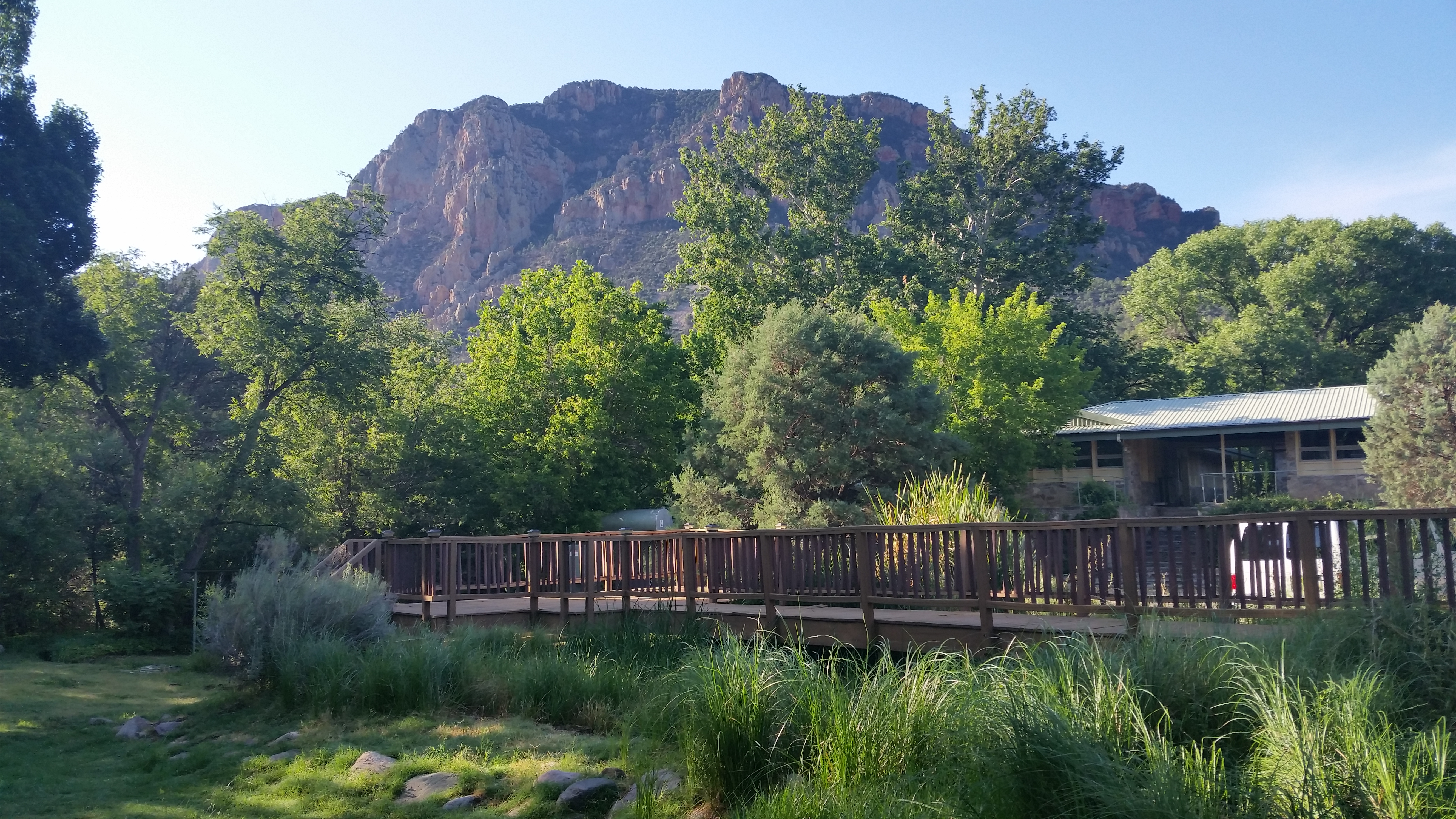
In this unique landscape, Earthwatch teams are mapping tree cavities, surveying owl species, and assessing the need to augment the landscape with the same nest boxes that have been so effective in Utah. The question is: will they work? But perhaps the bigger question is: are they needed? During the first year of research, volunteers found the canyons of the Chiricahua Mountains to have an abundance of tree cavities, primarily in the sycamores that line the canyon streams. And in many of those cavities were nesting Elf Owls and Whiskered Screech-Owls. Whiskered Screeches are so abundant in the lower canyons, in fact, that they may be pushing the Flammulated Owls higher up the mountain slopes, prompting new questions about how a changing climate might affect both of these players in this “find-the-cavity” survival game.
Dave’s Motivating Force: Earthwatch Volunteers
Growing up in eastern Texas, Dave knew every single tree cavity in his childhood neighborhood that harbored nesting Eastern Screech-Owls. Dave’s Masters research focused on how Flammulated Owls adapt to changing land use patterns – specifically the rapid buildup of infrastructure in advance of the 2002 Winter Olympics in Snow Basin, Utah.
After completing his PhD, Dave joined HawkWatch International as Senior Scientist. In partnering with Earthwatch, Dave is able to extend his long-term monitoring of Flammulated Owls in Snow Basin with colleague and Earthwatch Field Team Leader Dr. Markus Mika of the University of Wisconsin, LaCrosse, and expand his research to Southeast Arizona, where the drivers of potential changes are very different than northern Utah. Engaging members of the public in his work is critical to the success of his research.
“I’ve done a lot of different research projects and you work a whole lot and you spin your wheels and if you’re lucky you put out a paper or two about it. And if you’re lucky, those papers are read by maybe 50 scientists, or cited and used. And that’s impactful and I wouldn’t diminish the importance of that at all. But to have 56 people who came and spent time with us this summer who now appreciate climate change, small owls, and cavity nesters – and how these cavity nesters rely on cavities and what’s involved there – that is impact on a very different level.
To know that these folks now consider these processes when they engage with the natural world, and that they’re going to share that message with their families and social circles – that’s the biggest impact this project is going to have. No matter how many papers we churn out.
– Dr. Dave Oleyar
To learn more about this research in Arizona and Utah, visit our website: Following Forest Owls in the Western U.S.
Please contact us at communications@earthwatch.org with any questions or comments about this post.
